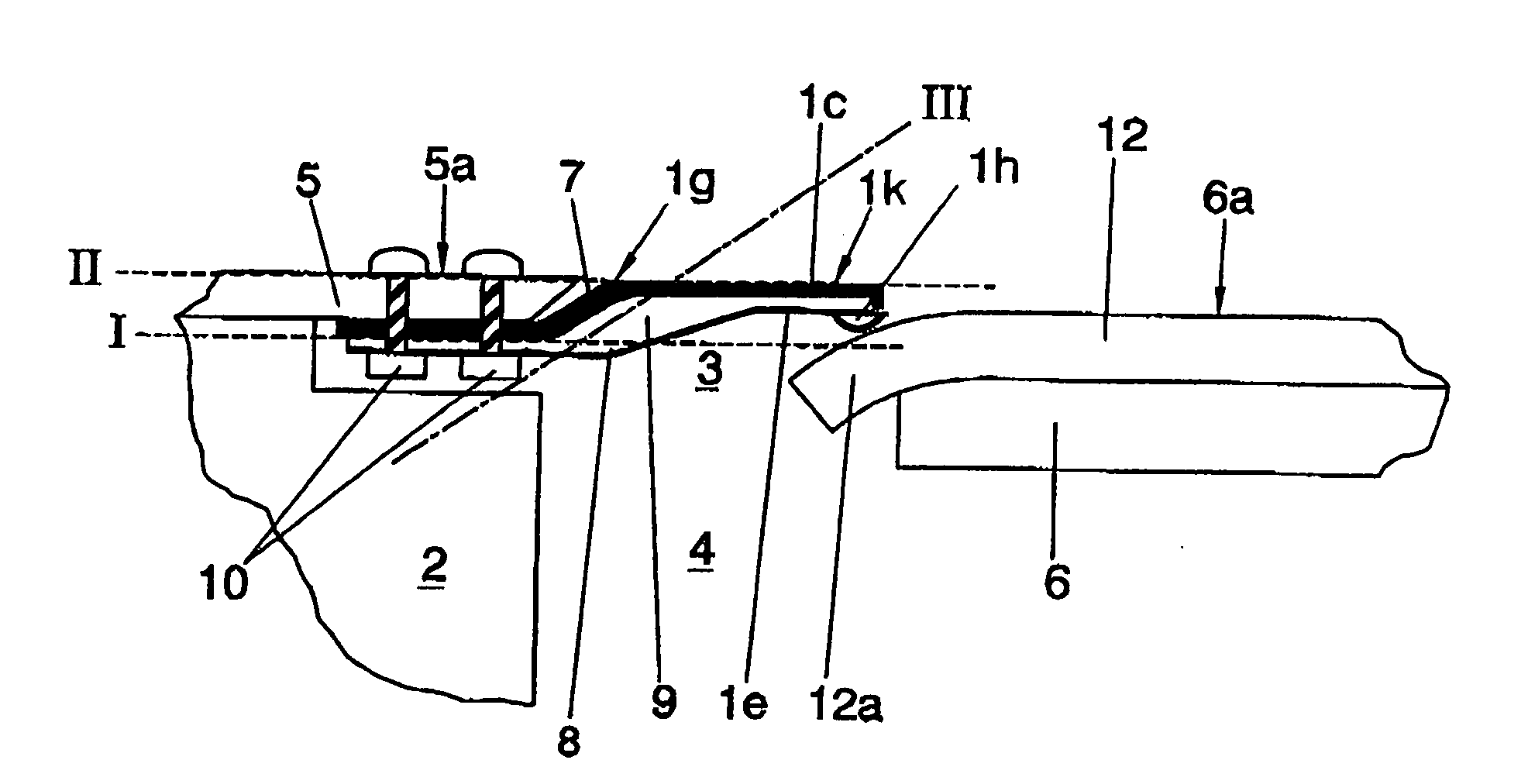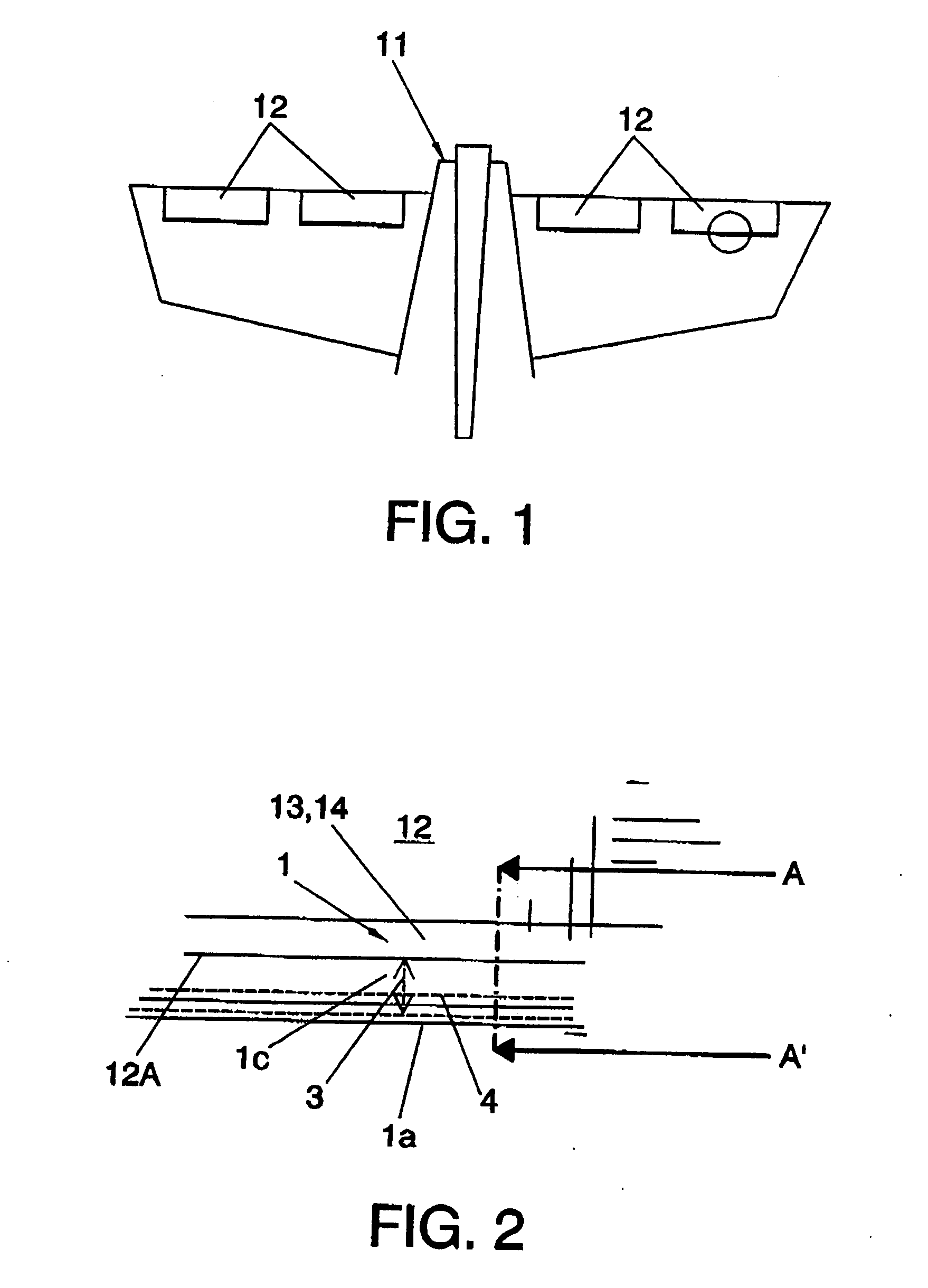Reinforced cover for gaps in an aerodynamic contour
a technology of aerodynamic contours and reinforced covers, which is applied in the direction of wings, wing adjustment, fuselages, etc., can solve the problems of unanticipated air flow behavior reducing aerodynamic efficiency, and possibly having a negative effect on aerodynamics
- Summary
- Abstract
- Description
- Claims
- Application Information
AI Technical Summary
Benefits of technology
Problems solved by technology
Method used
Image
Examples
Embodiment Construction
[0011]It is an object of the present invention to overcome the drawbacks of prior art stated hereinabove by means of a reinforced cover for gaps in the aerodynamic contour of a vehicle, particularly for an aircraft, which comprises a first attachment section attachable to a structural element of the vehicle by attachment means, a second elastic tongue-shaped section with an extension which covers at least partially an existing gap between two parts of the outer surface of a vehicle, such as, for example, a fixed part and a moving part of the vehicle, and with a free end which ends on the outer surface of the moving part, reinforcement means, and a layer of low sliding friction, such as, for example, a layer of polyester fabric, which covers at least partially the inner surface of the second section, a main internal body of an elastic material, such as, for example, silicone rubber, in which cover
[0012]the reinforcement means comprises at least one fiberglass layer formed at the oute...
PUM
 Login to View More
Login to View More Abstract
Description
Claims
Application Information
 Login to View More
Login to View More - R&D
- Intellectual Property
- Life Sciences
- Materials
- Tech Scout
- Unparalleled Data Quality
- Higher Quality Content
- 60% Fewer Hallucinations
Browse by: Latest US Patents, China's latest patents, Technical Efficacy Thesaurus, Application Domain, Technology Topic, Popular Technical Reports.
© 2025 PatSnap. All rights reserved.Legal|Privacy policy|Modern Slavery Act Transparency Statement|Sitemap|About US| Contact US: help@patsnap.com



